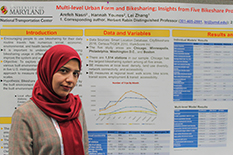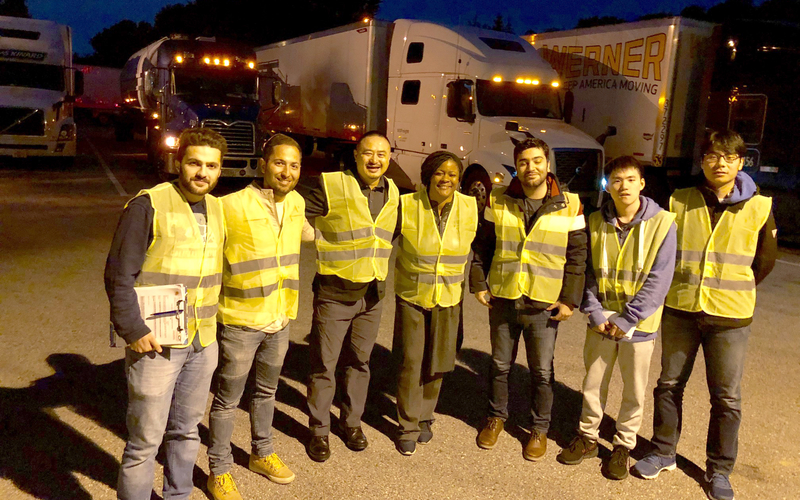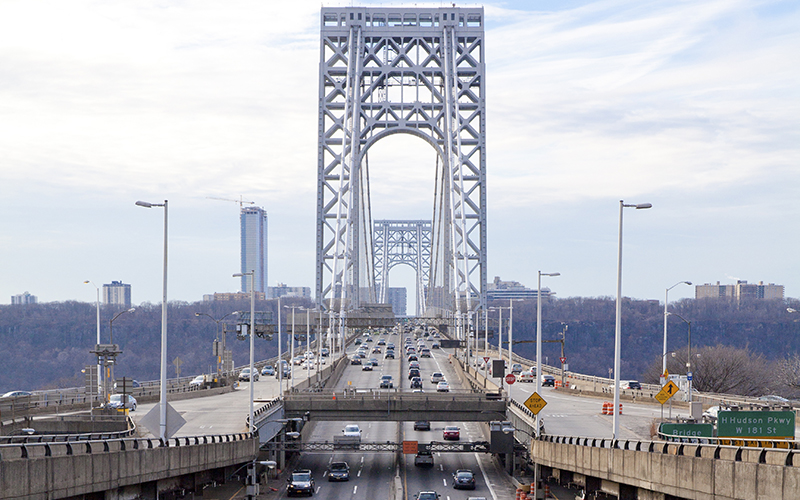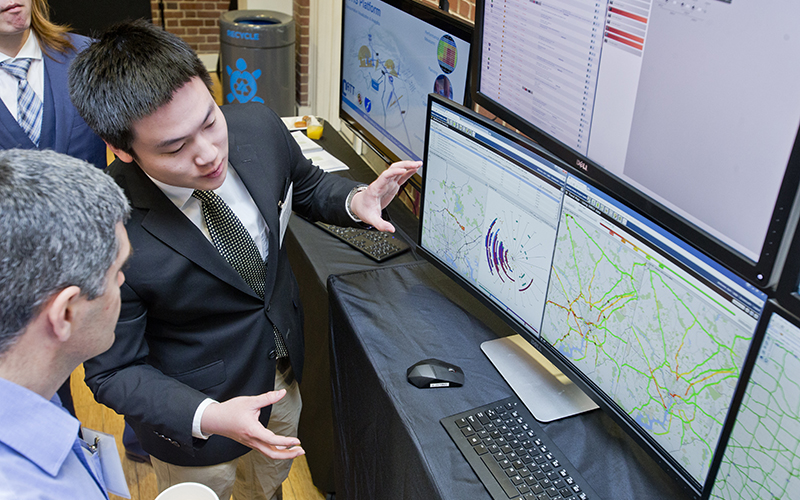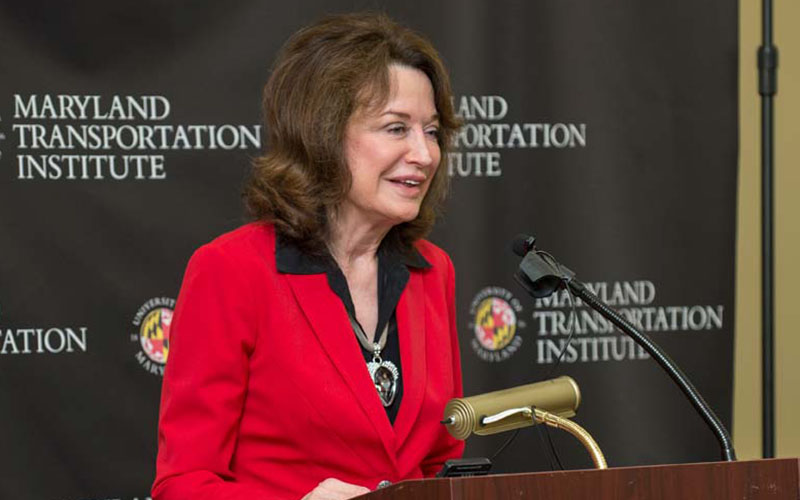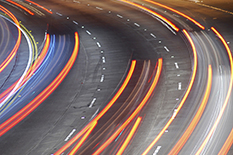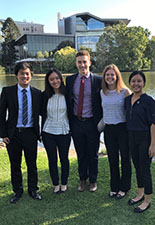News Story
The App that Fights Congestion, Emissions
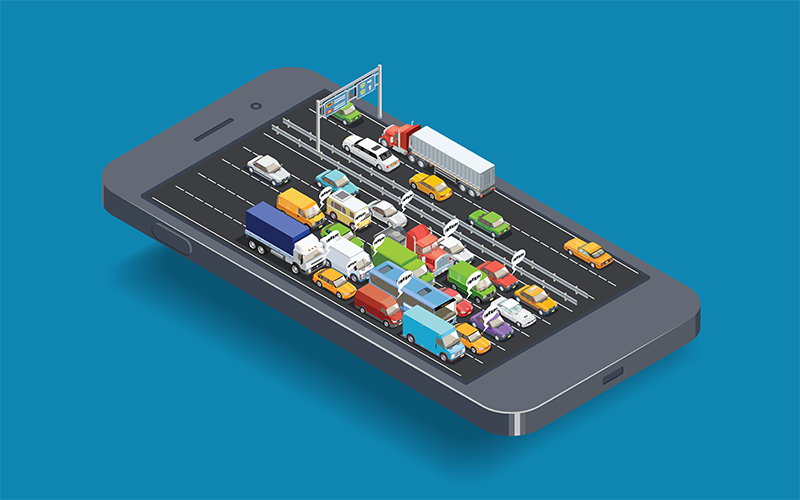
Illustration by B Creative Group
The average American lost 41 hours to rush-hour congestion in 2017, according to a scorecard published by transportation analytics company INRIX, placing the U.S. with nations like Indonesia, Venezuela, and Russia on the list of top five countries with the highest average peak hours spent in congestion. And while expanding road networks and public transit systems may seem like the only way to combat gridlock, researchers at the University of Maryland A. James Clark School of Engineering are betting they can meaningfully shave these hours down with a more personal approach.
They’ve built an AI- and big data-based travel app that nudges users to make smarter travel decisions—ones that benefit the environment, the user, and other travelers.
“We know that we will never build our way out of congestion,” said Lei Zhang, director of the Clark School’s Maryland Transportation Institute (MTI) and the Herbert Rabin Distinguished Professor of civil engineering. “But with artificial intelligence, we can build tools that get more accurate and helpful with each use, allowing us to manage travel demand while also helping people get where they want to go more smoothly.”
incenTrip, part of a $4.5 million project funded by the Department of Energy to reduce energy consumption in personal transportation, awards points based on how a user chooses to get around, giving more points for taking public transportation or commuting outside peak travel times, for example. These points can then be redeemed for gift cards to Amazon and the Apple Store.
Like other travel apps, incenTrip offers users a handful of travel modes to choose from: car, ridesharing, bus, subway, and biking. But the UMD app takes this formula a bit further, showing travelers how much fuel is consumed by each option and even suggesting that a user travel at another time or mix-and-match modes to ultimately cut time spent in traffic.
The options displayed—as well as the points assigned to them—are generated by algorithms that consider real-time road and transit conditions, how traffic will change throughout the trip, and the user’s individual behavior. The modeling and data fueling these algorithms come from MTI and the Clark School’s Center for Advanced Transportation Technology Laboratory, which manages the largest big data transportation archive in the world.
Zhang, along with collaborators Chenfeng Xiong and Ya Ji, began piloting incenTrip in the D.C.-Baltimore region in 2017. Today, they have 35,000 total users on Android and iOS.
That might not seem like many for a region with around 4 million commuters, but the pilot phase has shown that significant reductions in congestion, energy use, and emissions are possible through even a small number of travelers adjusting their decisions.
“Our research indicates that when an incenTrip user saves one minute in traffic, there’s a five to 18 minute travel delay savings systemwide for other travelers,” Xiong, an MTI assistant research professor, explained.
To reach their goal of cutting regional congestion and energy use by 10 percent over the next few years, Zhang and Xiong estimate they’ll need just 160,000 active users. They’ll leap closer to that goal later this year when the Metropolitan Washington Council of Governments adds incenTrip to the Commuter Connections accounts of tens of thousands of members.
Zhang, Xiong, and Ji are also working to expand beyond the pilot region through partnerships with government agencies as well as fleet managers, not-for-profit organizations, and others interested in immediately deployable solutions for reducing costs, energy use, and congestion.
Download incenTrip on Google Play or the Apple Store. For more information on becoming a partner, visit incentrip.org/Partnership.html.
Published October 17, 2018

